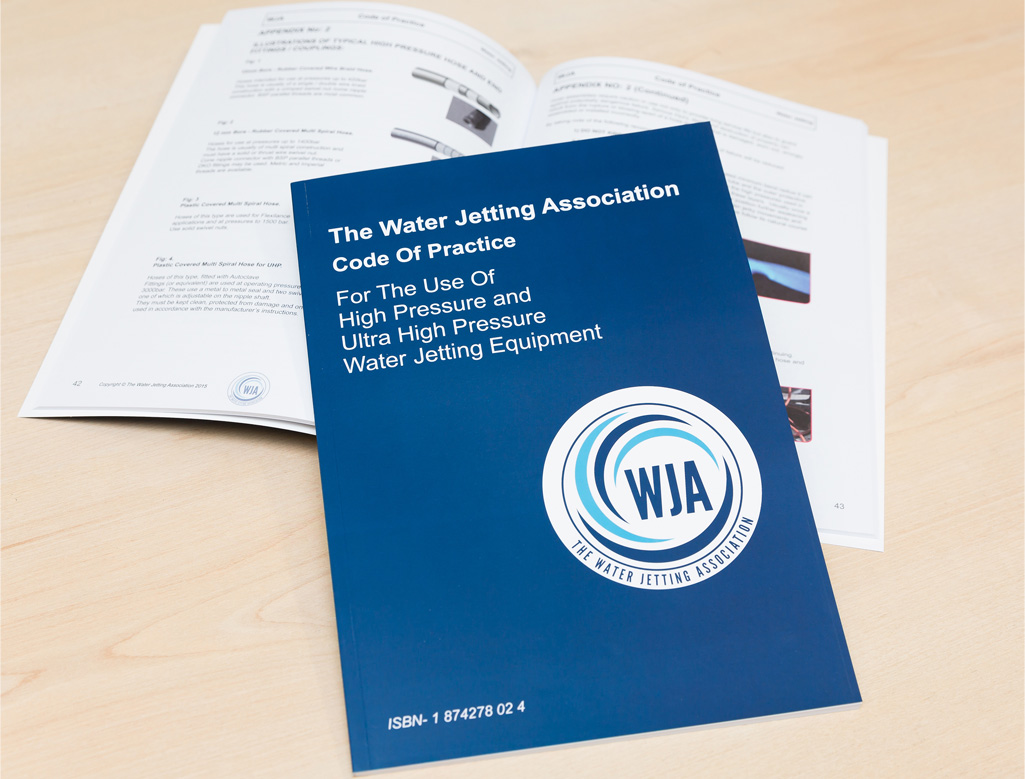New Medical Guidelines Added to Revised WJA Blue Code

Far-reaching new medical guidelines for managing injuries are among the important additions to a revised Code of Practice published by the Water Jetting Association (WJA).
The WJA, the member organisation for the UK water jetting industry, has revised its Blue Code of Practice for the Use of High Pressure and Ultra High Pressure Water Jetting for the first time since 2015.
It is the nineth time the Blue Code, as the document is called, has been revised or significantly amended and then republished since it was first created in 1982.
New medical guidelines
The WJA also has a ‘Red Code’ for the Safe Working and Use of Water Jetting in Drains and Sewers.
The new medical guidelines for the management of industrial high pressure fluid injection injuries (IHPFIIs) are based on research commissioned by the WJA and carried out by a team of eminent trauma doctors.
David Kennedy, Director of the WJA, said: “The medical guidelines were first published in 2019. They represent a step change in our understanding of fluid injection injury and our ability to treat it.
“For that reason, we wanted to include them in our Blue Code as soon as possible. If applied, the guidelines will save lives and reduce the risk of long-term and life-changing serious injury.
“We’ve also gone through the Code of Practice line by line, updating guidance based on latest understanding on best practice, changes to health and safety regulation and legislation, and feedback from our members.
“We also wanted to make sure every piece of advice and instruction is as clear as possible. Keeping our Codes of Practice up-to-date and relevant is vital because water jetting technology and capability is changing all the time.”
Medical emergency algorithm
The new WJA water jetting medical guidelines are designed in the form of an algorithm that takes the reader step-by-step through actions needed to treat injuries from the moment they occur through emergency treatment at hospital and ongoing care.
A research paper – Management of industrial high-pressure fluid injection injuries (HPFII): the Water Jetting Association (WJA) experience with water-driven injuries – explaining how it was devised has been published in the European Journal of Trauma and Emergency Surgery.
Paramedics and hospital doctors can fail to identify and treat fluid injection injuries associated with water jetting properly. The entry wound is often small so they do not take account of the potential seriousness of internal injuries and complications, including infection.

Hierarchy of risk control
The Blue Code was reviewed over several months during 2020 by members of the WJA’s Technical Committee, Training and Safety Committee and, finally, the association’s Ruling Council, which has ratified the final updated version.
Other significant changes include the inclusion of a hierarchy of control in an appendix to the section on risk assessment and a new appendix providing extra information and advice about water jetting personal protective equipment (PPE).
The Blue Code is given to members when they join the WJA. It can also be bought from the association’s online shop. The water jetting injury first aid algorithm is available as a free download via the WJA website home page.
Use your Blue Code
Key sections include organisation and duties of water jetting teams, water jetting units, water jetting accessories, safe use of water jetting equipment, care and maintenance of equipment, and waste disposal.
David Kennedy urged members and other organisations to consult it every time they need to confirm best practice in water jetting.
“Both the Blue Code and Red Code should be looked on as technical bibles,” he said. “They are not designed to be locked away in a drawer, but to be kept on desks and in operational vehicles so they can be consulted during projects and used to support training and competency instruction.
“Now the Blue Code has been fully updated, it is more relevant and useful than ever.”
